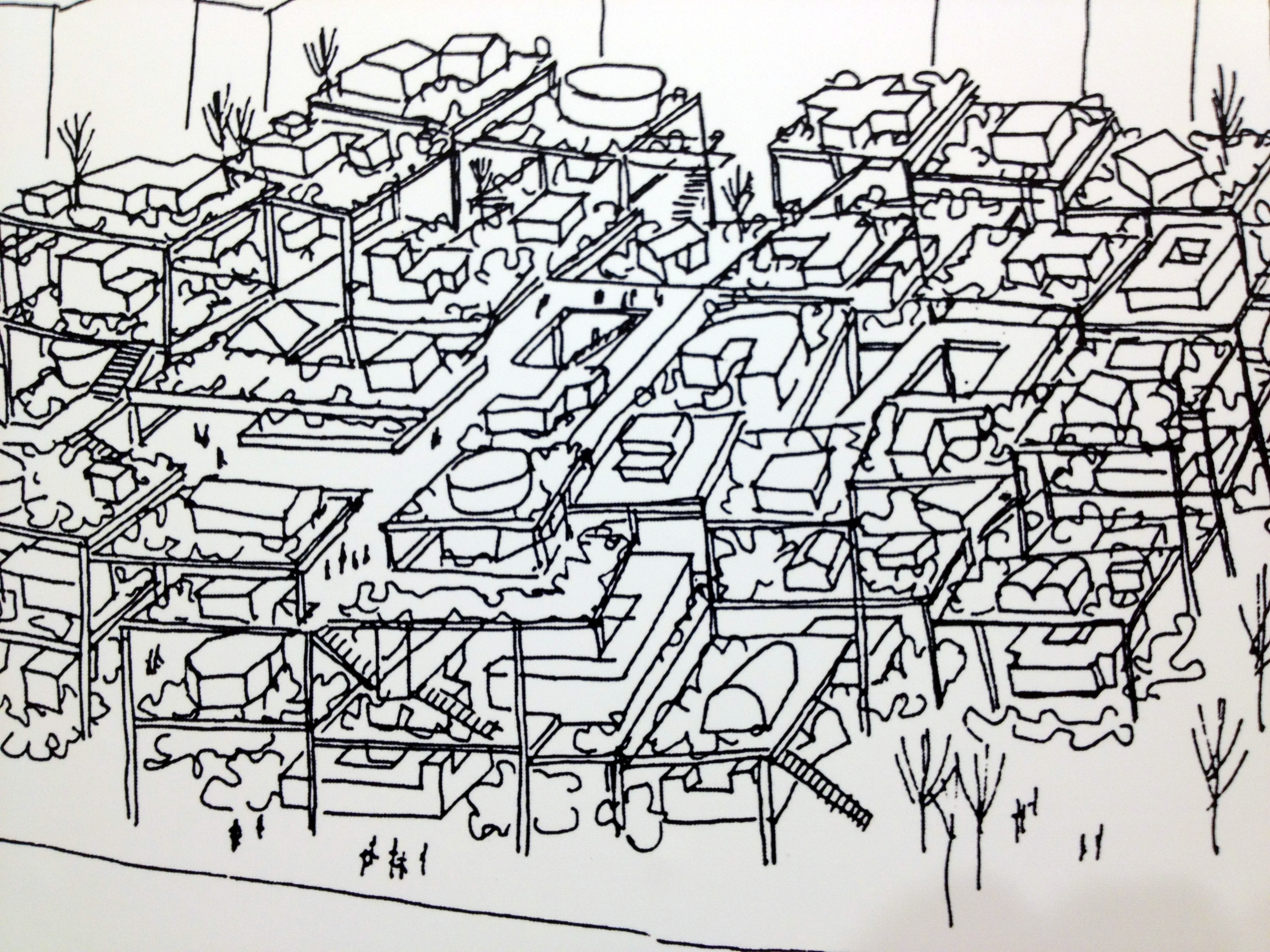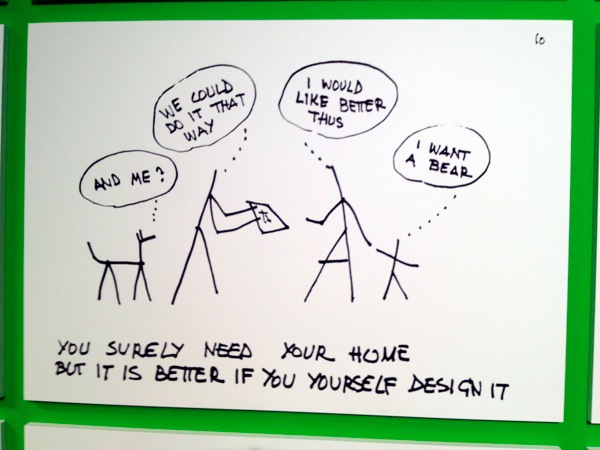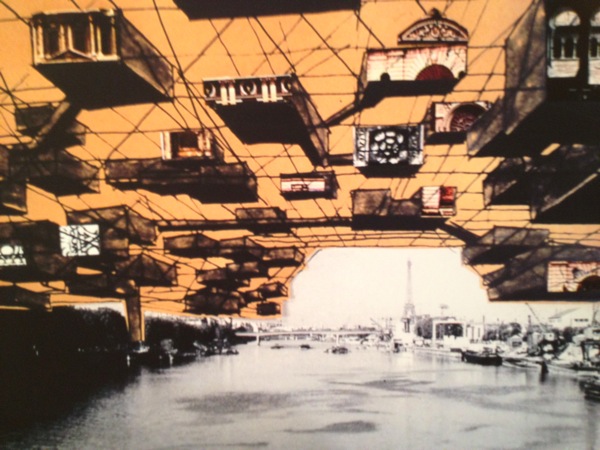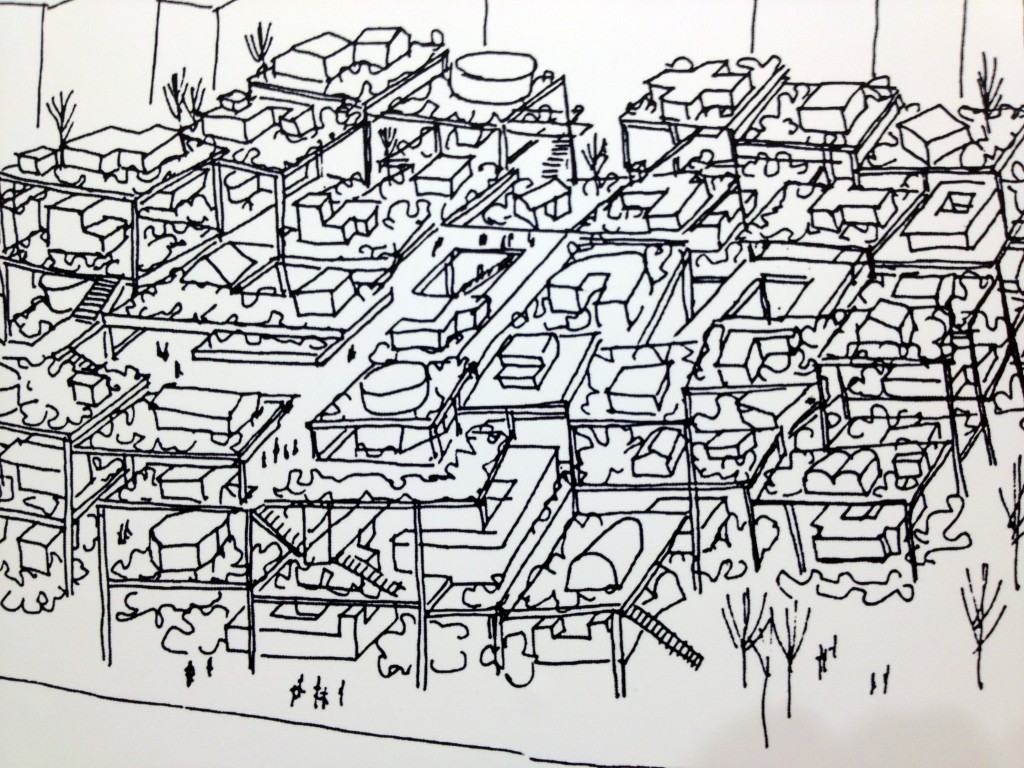Today I had the pleasure of visiting the University of Laussane, Switzerland to see an exhibit on Hungarian architect Yona Friedman, called the Genesis of a Vision. I’m certainly no expert on Mr. Friedman’s work, but I found the exhibit interesting coming from the perspective of someone who designs space with information.
There were a number of parallels between the way Friedman communicates his ideas and the way Information Architects work, including the use of storytelling, participatory design, standards development and an emphasis on empathy throughout the process. What makes Friedman interesting however is a recurring theme that users should be able to design, and furthermore modify, their own spaces.
Many of the ideas in the work go a beyond the architecture of a single dwelling or structure – including plans for neighbourhoods built on planes as well as large scale urban design with movable dwellings suspended from grids above.
In Friedman’s work “Mobile Architecture” means creating spaces that people can take with them. Independent dwellings that can be easily moved to and can function well in new contexts. Today living in a new place in the physical world means leaving our current dwelling and creating a new home in a new dwelling. Dwellings generally found in skyscrapers and urban sprawls.
Things are the same in the virtual world. Our digital identities, the content we’ve posted, our social network and other digital belongings do not follow us from one home to another. We maintain a separate user account for each network or system we reside in, each with its own association of data, media and communication channels.
Most of Friedman’s work has yet to be built – and it may be some time before it is. Yet the body of work offers some potential solutions for our expanding population and the increasingly complex interactions found in the digital world.
If we apply the ideas in Friedman’s work to the metaphor of information architecture we are left with questions about the design of the greater communities and places we inhabit on the web. Rather than focusing our effort on building and refining skyscrapers and walled gardens, it’s time we started thinking horizontally – working on the spaces between the places we live in.
We are witnessing the transition from the Web of Documents towards the Web of Data, otherwise known by some as Web 3.0. While it is still open to debate whether linked open data and semantic markup will ever be fully utilized, we are definitely seeing progress in recent years with linked data from sources like DBPedia and semantic markup such as rich snippets appearing on the results pages of major search engines.
Data that is linked (i.e. defined and structured the same way across different datasets) effectively creates a set of grids upon which other structures such as websites can be built and individuals or organisations can move between. Semantic markup creates similar links between the digital structures we’ve built. To me, these two concepts reflect a bit of Friedman’s thinking as applied to information architecture.
The digital world has developed at a breakneck pace, and the rate of it’s development is accelerating beyond that of the physical world. This gives us a unique opportunity to experiment and do things differently. Information Architects now have the opportunity to work on the spaces between our digital structures, rather than on the traditional, solitary and immovable structures we’ve inhabited so far.



